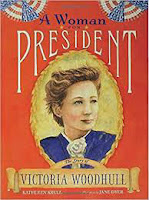Cloudy 48°F/9°C at La Rochelle, France
Sunny 83°F/28°C at Cedar Park, TX
Buonagiornata miei amici:
When I returned
from my high school reunion, I checked the Email inbox attached to my website www.mikebotula.com There, I found a message that began….
I’ve read with great interest your website and particularly the items
dealing with your father andI’m a French diver and with friends of mine we created about 20 years ago a non-profit making association whose aim is to discover, dive and reconstruct the story of wrecks sunk off the French shores.
We are specialized with U-Boote which are numerous around our coasts.
My mind hurtled
from a class reunion filled with warm childhood memories to a watery wreck site
off the coast of La Rochelle, France. The writer was Christophe Moriceau, and he had actually dived
to the site where the U boat that attacked my father’s ship, LST 920, off the
coast of England during World War 2. That’s when I realized that my journey,
following in my father’s footsteps during his wartime Odyssey, was not yet
over.
LST 920 Ship’s Log: Monday 14 August
1944
1654 hours: First hit on LST 921,
directly astern of us. Presumably by torpedo.
1654 hours: General Quarters sounded
1656 hours: LCI #99 (British) hit by torpedo presumably
1657 hours: All stations manned and ready; approximate position…50°54’ North, 4°45’ West
1657 hours: Relieved on conn by Captain Schultz and went to GQ station
Ensign John J. Waters, Officer of
the Deck
What followed in the hours ahead became
a true story of wartime heroism! A stubborn skipper
 |
| LST 920 Captain Schultz |
My father, Lieutenant Charles
Botula, Jr. had come to the bridge when General Quarters sounded and saw a
second German torpedo coming directly toward LST 920, when the British escort
vessel steamed between LST 920 and the oncoming torpedo. LCI(L) 99 was blown
out of the water!
The U-boat, U 667 followed LST 920
over the next day or so, looking for another target. Finally, it left the
convoy and proceeded back to its home port of La Rochelle, France and the
hero’s welcome usually given to U boat crews. But, in a twist of fate, U
667 struck a mine and sank with all
hands.
In his email, Christophe Moriceau
informed me that the wreck of the Type 7 U 667 was
discovered in 1973 by a
diver looking for the final resting places of two unterseebooten – U 263, lost in 1944 during sea trials and U 667,
returning from her last patrol. Moriceau himself dove the wreck in 2005. His
first attempt at locating the wreck of U 667 ended in failure. But, on his
second dive found what he believed to be the remains of U 667. Unfortunately,
the bow of the sub was so heavily damaged from striking the mine, that it was
impossible to see the tell-tale Schnorchel
(snorkel) that the U 667 was equipped. Moriceau snapped some photographs and
left the dive site without firmly identifying the submarine. He did, put a note
in a bottle about his quest and set the bottle, with his note inside, back into
the sea.
 |
| LST 920 - France 1944 |
Moriceau’s story doesn’t resume until
2014, when the note was finally read by an Austrian man, Christian Hirsch, who
organized a dive on the site of the U 667. According to Moriceau, Hirsch’s mother
had known one of the crewmembers of U 667 when she was a young nurse during the
war.
After diving the wreck, Hirsch sent his photographs to Dr. Alex Niestlé, a noted German
U-bootewaffe specialist, who identified the wreckage as the remains of U 667. I
am hoping now that Christophe Moriceau can provide me with some photographs of
the U 667 wreckage.
 |
| My Dad, Lt. Charles Botula, Jr. |
My father died in 1965, never
knowing even the number of the U boat that had attacked his convoy or the fate
of its crew. A few of the crew members of the LST 920 and LST 921 did extensive
post-war research on the attack. Ensigns
Don Joost of LST 921 and Don Reed of LST 921 were very helpful when I began
researching my book in 2003. Their research into identifying the U boat that
attacked their ships had taken many years. But, the skipper – Captain Harry
Schultz, and his executive officer, my father – Lt. Charles Botula, Jr. never
knew the rest of the story.
I can thank a French diver,
Christophe Moriceau, for helping to solve a family mystery. Merci, mon ami!









